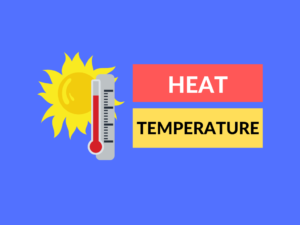Difference Between Global Warming and Climate Change
Global warming and climate change are often used interchangeably, but they represent different aspects of environmental concerns. In this article, we will explore the differences between global warming and climate change, their examples, uses, and provide a comprehensive table highlighting the variances between the two phenomena.
What is Global Warming?
Global warming refers to the long-term increase in Earth’s average surface temperature, primarily due to the accumulation of greenhouse gases in the atmosphere. These gases trap heat and prevent it from escaping, causing a gradual rise in temperatures.
Examples of Global Warming
1. Melting of polar ice caps and glaciers
2. Increased frequency and intensity of heatwaves
3. Rising sea levels
4. Changing precipitation patterns
What is Climate Change?
Climate change refers to the long-term modification of Earth’s climate patterns, encompassing various interconnected aspects such as temperature, precipitation, wind patterns, and more. It can be caused by natural processes or human activities.
Examples of Climate Change
1. Shifts in seasons and temperature ranges
2. Alterations in wildlife migration patterns
3. Changes in the frequency and intensity of extreme weather events, such as hurricanes and droughts
Differences Between Global Warming and Climate Change
| Area of Difference | Global Warming | Climate Change |
|---|---|---|
| Cause | Primarily caused by human activities and emission of greenhouse gases | Can be caused by both natural processes and human activities |
| Timeframe | Focuses on the long-term increase in Earth’s average surface temperature | Encompasses long-term changes in various climate parameters beyond just temperature |
| Scope | A specific aspect of climate change related to temperature rise | Broader term covering a wide range of climate-related modifications |
| Effects | Leads to various consequences such as sea-level rise, extreme weather events, and ecosystem disruption | Results in multiple impacts on ecosystems, biodiversity, human societies, and economies |
| Focus | Mainly concentrates on the increase in global temperatures | Considers a comprehensive understanding of climate patterns, including multiple factors and their interactions |
| Mitigation Strategies | Involves reducing greenhouse gas emissions through renewable energy adoption, energy efficiency, and carbon capture | Addresses both the reduction of greenhouse gas emissions and adaptation to the changing climate |
| Public Perception | Relatively well-known concept, often associated with climate change | Oftentimes used interchangeably or confused with global warming |
| Scientific Consensus | Widely accepted among the scientific community | Supported by an overwhelming majority of scientists |
| Policy Implications | Directly influences policy decisions related to greenhouse gas emissions, energy production, and sustainability | Explores broader strategies to combat climate change and its multi-dimensional impacts |
| Long-Term Perspective | Can be seen as a potential outcome or consequence of climate change | Considers the systemic changes in Earth’s climate patterns over an extended period |
Conclusion:
In summary, global warming focuses on the long-term increase in temperatures due to greenhouse gas emissions, while climate change encompasses the broader modifications in climate patterns beyond just temperature. The differences lie in their causes, scope, effects, and policy implications, among others.
People Also Ask:
- Q: Is global warming the same as climate change?
- Q: How are human activities contributing to global warming and climate change?
- Q: Can climate change be reversed?
- Q: Are there any natural factors contributing to global warming?
- Q: How can individuals make a difference in combating global warming and climate change?
A: No, global warming refers specifically to the increase in Earth’s average surface temperature, whereas climate change encompasses various long-term alterations in climate patterns.
A: Human activities, such as burning fossil fuels and deforestation, release greenhouse gases, leading to an enhanced greenhouse effect and subsequent global warming and climate change.
A: While some effects of climate change may be irreversible, taking immediate action to reduce greenhouse gas emissions and implement sustainable practices can mitigate further changes and facilitate adaptation.
A: While human activities are the primary cause of the current global warming trend, natural factors such as volcanic eruptions and solar radiation can also influence short-term climate variations.
A: Individuals can contribute by reducing energy consumption, adopting renewable energy sources, practicing sustainable agriculture, supporting afforestation, and raising awareness about the importance of mitigating global warming and addressing climate change.


